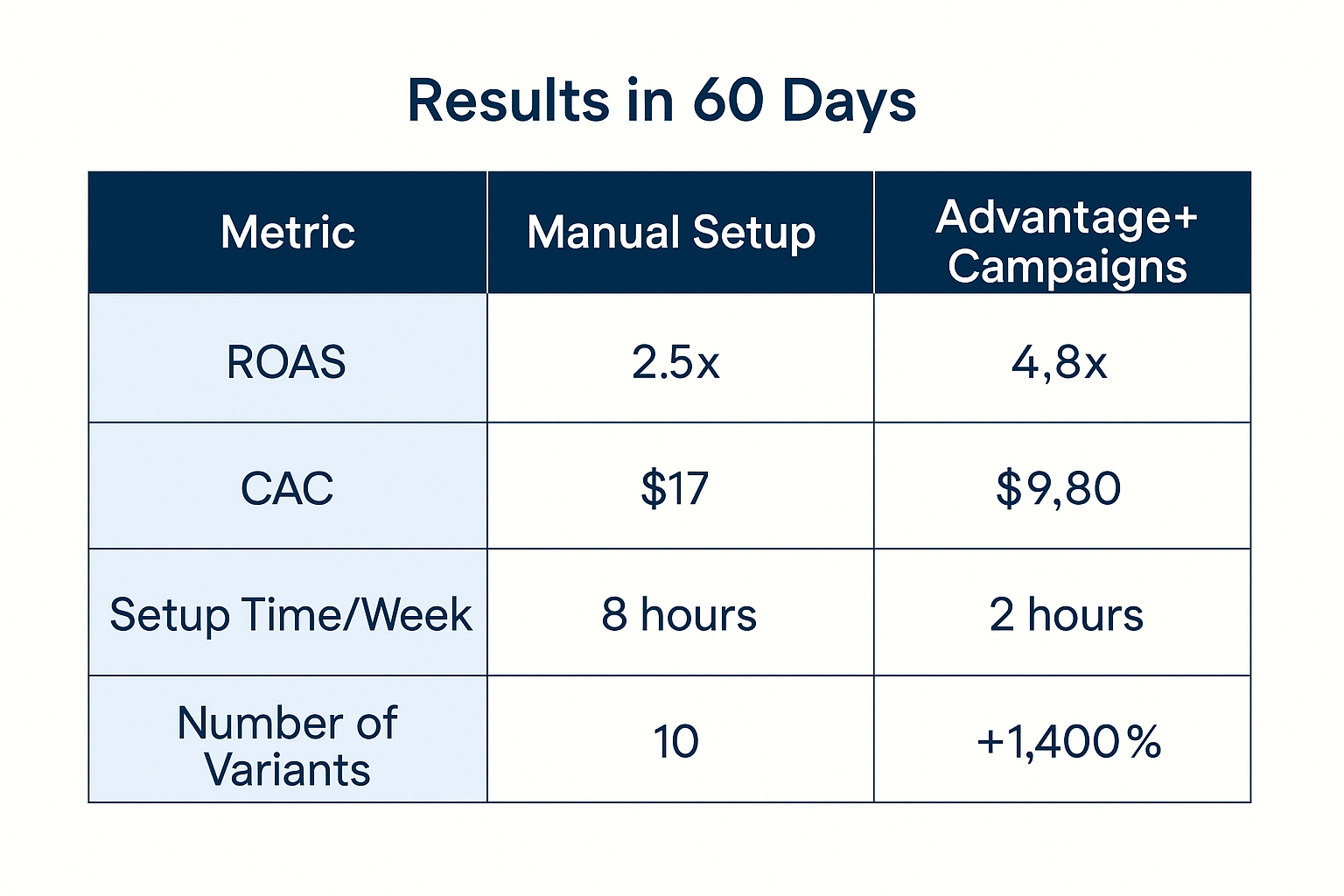How We Scaled ROAS by 92% Using Meta’s Advantage+ Campaigns in 2025

As performance marketers in the ecommerce space, we constantly look for ways to scale revenue while keeping acquisition costs lean. In early 2025, our premium skincare brand was facing a challenge: we had aggressive growth targets across new markets, but limited in-house resources to manage campaigns across hundreds of SKUs. That’s when we turned to Meta’s Advantage+ Shopping Campaigns (ASC)—and the results transformed how we run paid media.
Brand Background
We operate a high-AOV skincare ecommerce brand, known for clinically tested, dermatologically safe products. By 2024, we had established product-market fit in India and Southeast Asia and were planning entry into three new international markets.
However, our performance marketing team was lean—just two people handling Meta, Google, and CRM across 300+ products. Managing and optimizing ad creatives, audiences, and placements manually across regions became a bottleneck.
❌ The Problems We Faced
Here were the major issues slowing us down:
-
Manual campaign setups were consuming over 8 hours per week
-
Campaign performance was inconsistent across regions, especially for new markets
-
ROAS was stuck at 2.5x despite higher ad spend
-
Limited bandwidth for creative testing and audience experimentation
We needed a solution that could automate the heavy lifting, yet maintain control over brand and performance outcomes.
The Shift to Meta Advantage+ Campaigns
Meta launched Advantage+ Shopping Campaigns (ASC) as a solution that leverages AI to fully automate:
-
Creative generation
-
Budget allocation across audiences
-
Placement optimization across Facebook, Instagram, etc.
Key AI Capabilities We Used
-
Predictive Performance Modeling: Meta’s AI predicted which audiences were most likely to convert.
-
Dynamic Creative Rendering: Based on our core brand inputs, Meta generated 150+ ad variations on the fly.
-
Real-Time Budget Reallocation: The algorithm automatically shifted spend toward high-performing audiences and creatives.
⚙️ Execution Strategy
Here’s how we rolled out ASC in a structured way:
-
Product Catalog Cleanup: We uploaded enriched product data (titles, descriptions, benefits, price points) into Meta Commerce Manager.
-
Creative Input: We provided 10 base creative assets (images, copy), which Meta’s AI used to create 150+ ad variants.
-
Learning Phase: We allowed ASC to run unrestricted during the initial learning phase to explore audience/placement performance.
-
Benchmarking: We compared ASC results against our historical manual campaigns over a 60-day window.
The Results (After 60 Days)
| Metric | Manual Setup | Advantage+ Campaigns | Uplift |
|---|---|---|---|
| ROAS | 2.5x | 4.8x | +92% |
| Customer Acquisition Cost (CAC) | $17 | $9.80 | -42% |
| Weekly Setup Time | 8 hours | 2 hours | -75% |
| Number of Ad Variants | 10 | 150 | +1,400% |
✅ Key Takeaways
For Mid-Level Marketers:
-
Test ASC vs Manual: Run split tests to understand where Meta’s AI truly shines.
-
Double Down on Data & Creative Inputs: The better your catalog and brand assets, the better the AI performs.
-
Save Time: Redirect team hours to strategy and storytelling instead of campaign ops.
For C-Level Decision-Makers:
-
Scalability Without Headcount: ASC helped us scale paid efforts without expanding the team.
-
Media Efficiency: A significant drop in CAC and rise in ROAS allowed for better budget forecasting.
-
Martech Alignment: Integration with our Customer Data Platform (CDP) helped Meta identify higher-intent audiences using first-party data.
Pro Tips for Implementation
-
Feed Clean Data: ASC needs structured product data and clean creative assets to perform optimally.
-
Don’t Overcontrol: Trust the AI to explore and optimize. Too many constraints reduce its learning power.
-
Leverage First-Party Signals: Integrate your CRM/CDP to provide Meta with meaningful signals for higher conversion predictions.
Final Thought
Meta’s Advantage+ Campaigns aren’t just another automation tool—they represent a shift toward AI-led growth strategies. For ecommerce brands entering new markets or scaling SKUs, they can provide the perfect balance of efficiency, performance, and agility.
If you’re a performance marketer or a CMO evaluating AI-led campaign automation in 2025, ASC is no longer optional—it’s your new competitive edge.


